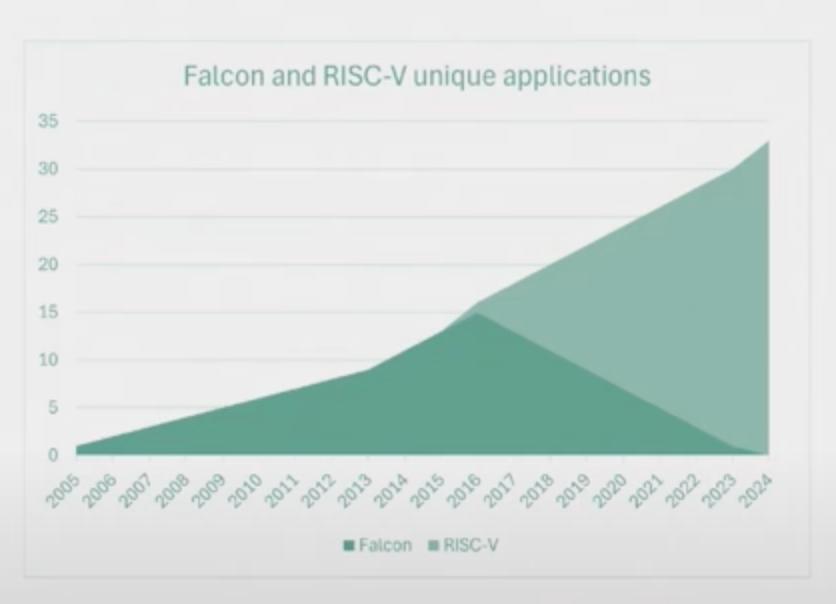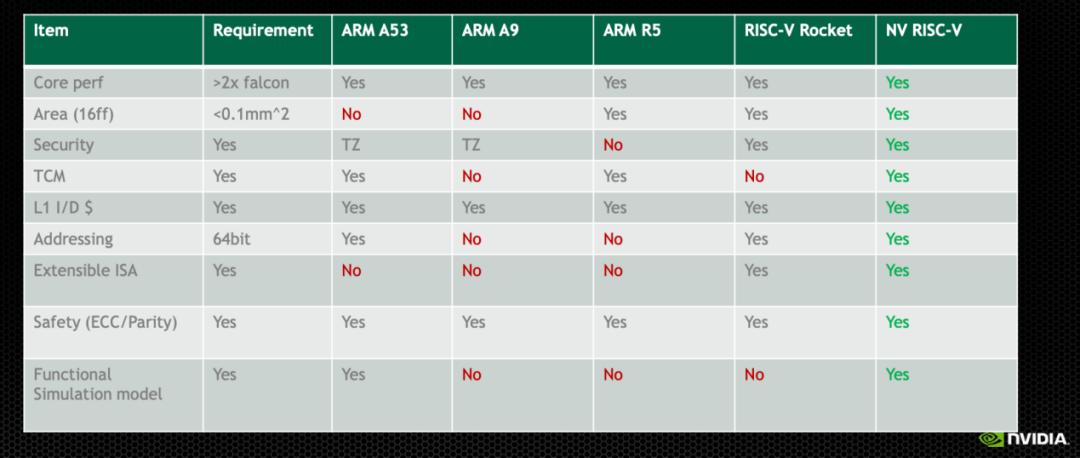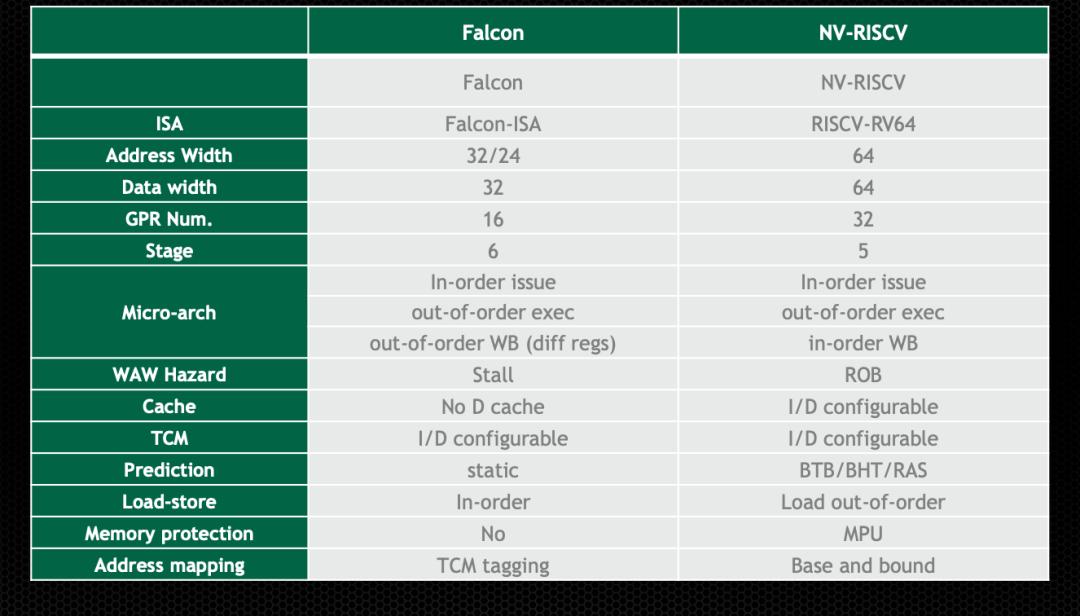Analysis of the advantages and characteristics of NVIDIA RISC-V architecture

Source: NVIDIA RISC-V Summit 2024 speech
In today's world of rapid technological development, innovation in chip architecture is an important force driving the advancement of information technology. NVIDIA, as the world's leading graphics processor (GPU) manufacturer, has invested a lot of energy in the RISC-V architecture in recent years and has achieved remarkable results. This article will explore in depth the advantages, technical characteristics and applications of NVIDIA's RISC-V architecture in multiple fields.
Introduction to RISC-V architecture
RISC-V (pronounced "risk-five") is an open standard instruction set architecture (ISA) designed based on the principles of reduced instruction set computing (RISC). Unlike proprietary instruction set architectures such as x86 or ARM, RISC-V allows any organization or individual to freely use, develop, manufacture and sell RISC-V-based chips and software under the premise of complying with its open source license agreement. This openness not only promotes technological innovation, but also lowers the entry barrier, allowing more companies and research institutions to participate in the development of customized hardware solutions.
Advantages of NVIDIA's RISC-V architecture

Comprehensive comparison of various instruction sets (Source: RISC-V in NVIDIA, 2017)
Openness:The open source nature of RISC-V enables NVIDIA to freely customize and optimize its chip design to meet the needs of specific applications. This flexibility helps NVIDIA maintain its leading position in the fierce market competition.
High efficiency: Based on the RISC principle, RISC-V is committed to achieving efficient data processing through fewer and simpler instructions. NVIDIA uses this feature to design a high-performance RISC-V processor that can significantly improve computing speed and reduce energy consumption.
Scalability: RISC-V's design philosophy supports easily expandable instruction sets to adapt to emerging computing needs and technological development. NVIDIA has added a number of custom extensions to the RISC-V core, such as 64-bit physical address/virtual address extensions, secure debugging functions, etc., which further improves the performance and security of the chip.
Modular design: NVIDIA's RISC-V architecture adopts a modular design, allowing developers to choose suitable modules to combine as needed to meet the needs of different application scenarios. This design strategy not only improves development efficiency, but also reduces production costs.
Technical features of NVIDIA's RISC-V architecture

NVIDIA RISC-V Story, 2016 (Source: NVIDIA)
Multi-class core optimization: NVIDIA has launched three types of RISC-V controller cores, namely NV-RISCV32, NV-RISCV64 and NV-RVV. Each type of core is optimized for specific applications, showing extremely high flexibility and scalability.
High-performance vector operations: The NV-RVV core adds vector extensions (1024 bits) on the basis of NV-RISCV32 to support high-performance vector operations. This feature makes NVIDIA's RISC-V architecture perform well in processing large-scale data operations.
Secure debugging function: NVIDIA integrates the secure debugging function of ICD (In-Circuit Debug) on the RISC-V core, supporting ROM memory protection. This function helps developers to find and fix problems in time during the development process, and improve the stability and reliability of the chip.
Modular subsystem: NVIDIA's Peregrine subsystem is one of the key designs in its RISC-V ecosystem. By combining the RISC-V core with general peripherals, it not only reduces hardware redundancy, but also optimizes the software development process. This design strategy enables NVIDIA's RISC-V architecture to perform well in GPU control tasks and other scenarios that require efficient resource management.
Application of NVIDIA's RISC-V architecture
Internet of Things: RISC-V's low power consumption and high efficiency are very suitable for the needs of IoT devices. NVIDIA's RISC-V architecture is widely used in smart sensors, embedded devices, smart homes and other fields, providing these devices with powerful computing power and flexible scalability.
Artificial Intelligence: With the rapid development of AI technology, the demand for high-performance computing continues to increase. NVIDIA's RISC-V architecture supports customized AI accelerators, which can effectively handle AI tasks with high computing requirements. This allows NVIDIA to maintain its leading position in the field of AI.
Edge computing: RISC-V plays an important role in edge computing. The efficient processing and low power design of NVIDIA's RISC-V architecture make it very suitable for edge computing devices such as smart cameras, smart gateways, etc. These devices can process and analyze data locally, reducing dependence on the cloud.
Automotive electronics: With the continuous advancement of automotive intelligence, the demand for high-performance computing in the automotive electronics field is also increasing. NVIDIA's RISC-V architecture has been widely used in the field of automotive electronics due to its flexibility and scalability. For example, RISC-V-based processors are used in automotive electronic control units (ECUs), in-vehicle entertainment systems, and autonomous driving assistance systems.
Conclusion
NVIDIA's RISC-V architecture has shown strong application potential and wide applicability in many fields with its advantages of openness, high efficiency, scalability, and modular design. With the continuous advancement of technology and the continuous expansion of the market, NVIDIA's RISC-V architecture is expected to become one of the mainstream architectures in the computing field in the future. We look forward to NVIDIA continuing to leverage its innovative advantages and contribute more to the development of information technology.




 Need Help?
Need Help?







